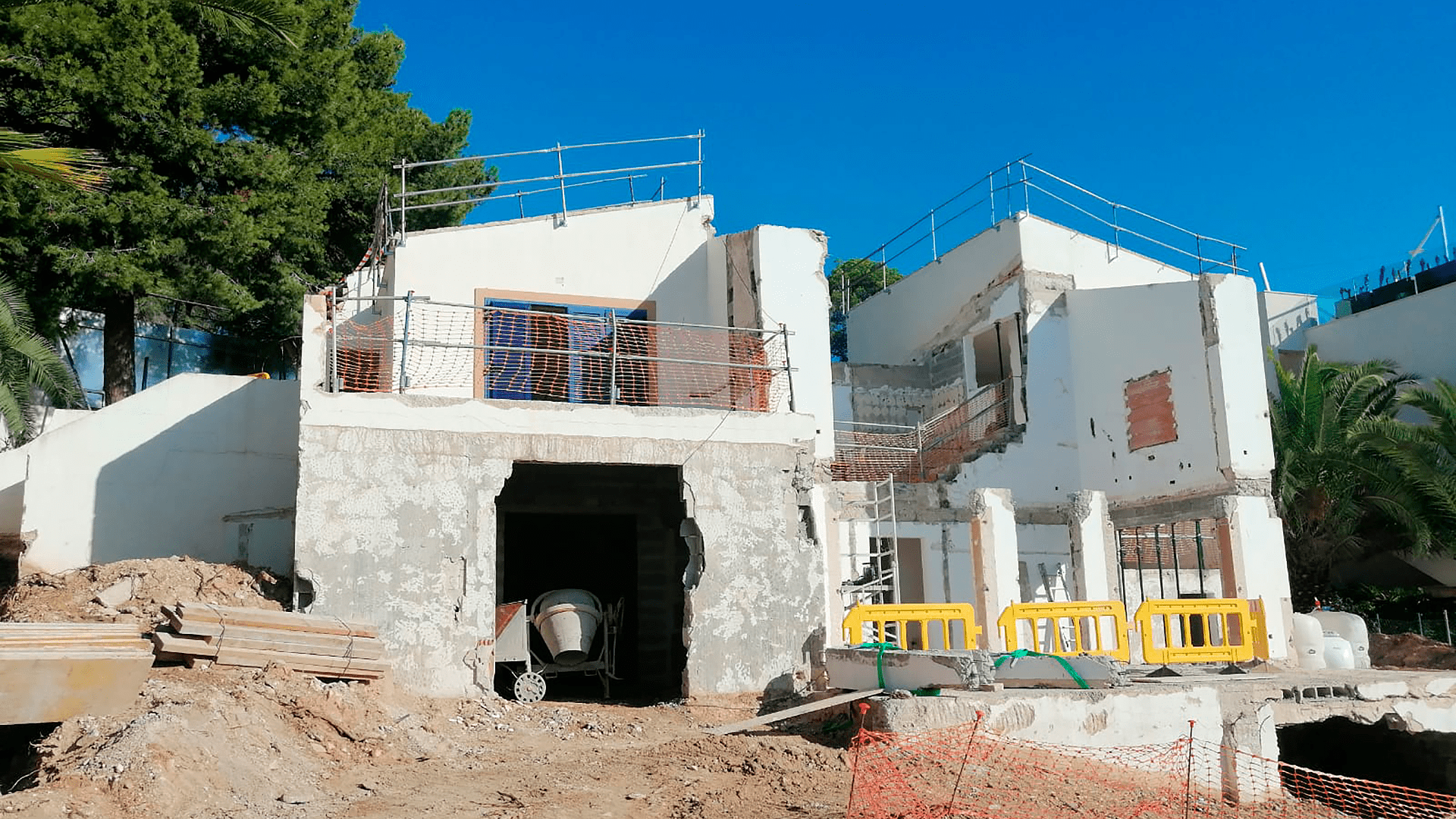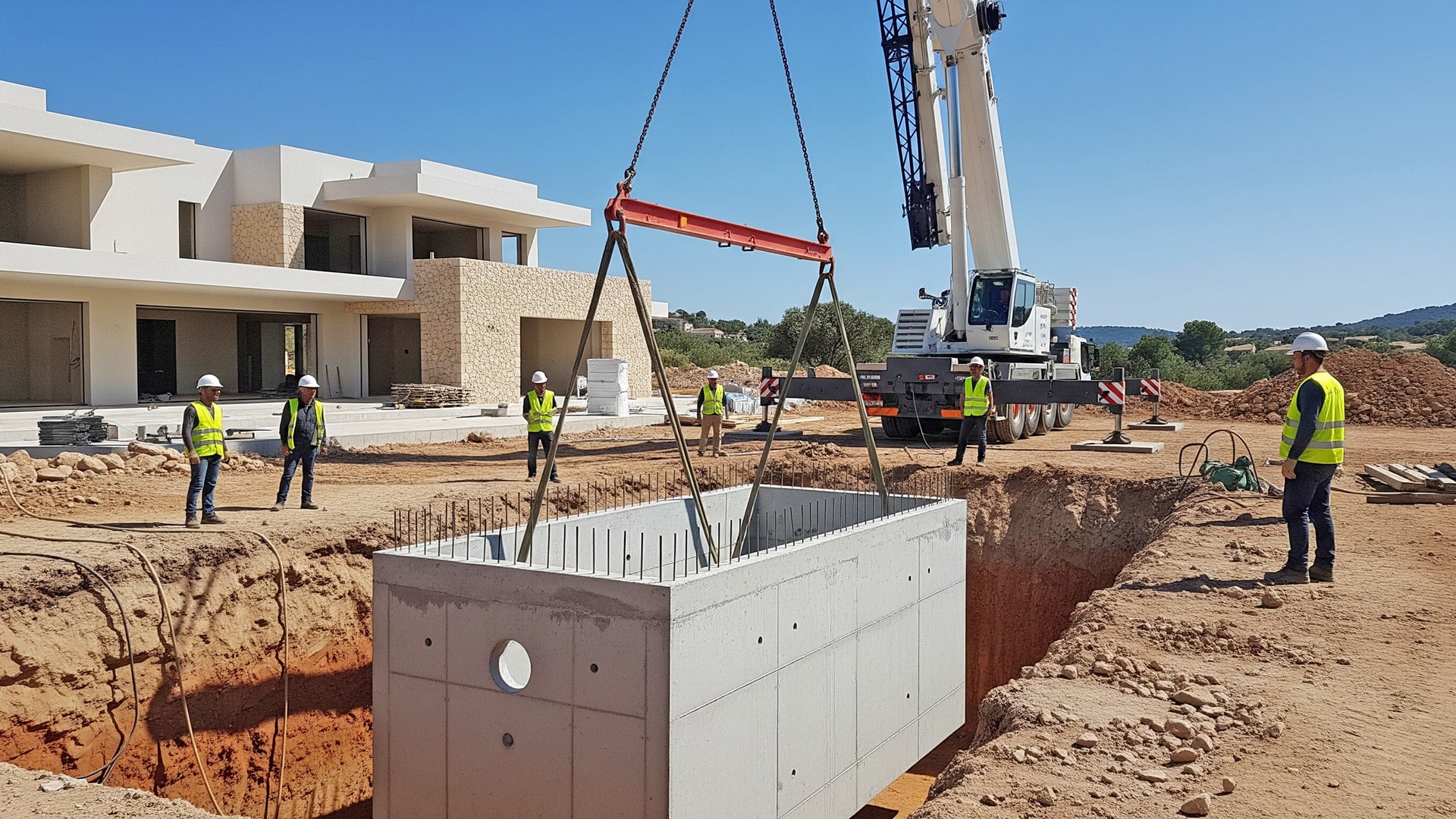

Everything you need to know about the construction type of your new build project in Majorca.
Over the last 20 years, there has been a trend towards more modern and contemporary styles of architecture in Majorca. Many clients are now favouring a minimalist and sleek aesthetic, characterised by clean lines, large glazed areas and modern materials such as concrete and steel. This style is especially found in new luxury villas and flats in the upper price segment. However, there are also many projects that combine modern architecture with traditional elements to create a connection to local culture and history.
There are different construction methods that can be chosen depending on the location, budget, architectural style and individual preferences.
Construction types:
- Natural stone construction:
Natural stone construction is very common in Majorca and is often used for traditional, rustic fincas. Walls and ceilings are made of natural stone such as sandstone, limestone or granite. This construction type is also often used in the renovation of old buildings in order to preserve traditional elements such as natural stone walls, arches and vaulted ceilings
- Solid construction:
Solid construction means that load-bearing walls, ceilings and columns are made of massive building materials such as concrete, reinforced concrete, brick or natural stone
- Skeleton construction: (also known as post or beam structure)
This construction type uses concrete, steel or wood to construct the load-bearing parts of the building
- Prefabricated house construction:
The prefabricated house construction method is also becoming increasingly popular in Majorca, as it offers a quick and cost-efficient way to build a new house. Prefabricated components made of concrete, wood or other materials are assembled on the building site.
- Wood construction:
This construction type offers a fast construction time, good energy efficiency and natural aesthetics
The skeleton construction method is most frequently used in Spain – especially in the construction of apartment buildings, this type of construction is cheaper and faster to build compared to the solid construction type.
What is the difference between skeleton construction and solid construction?
The main difference between skeleton construction and solid construction lies in the way the structure of the building has been built.
In skeleton construction, the load-bearing structure of the building is formed by individual beams or columns arranged as a skeleton or frame. The non-load-bearing elements such as walls and windows are placed within the skeleton. This construction type allows a flexible and adaptable design of the floor plan, as the non-load-bearing elements can be easily moved or replaced.
In solid construction, on the other hand, the walls and ceilings are built as solid, continuous structures made of stone, concrete or brick. The load-bearing elements are an integral part of the wall and ceiling construction. However, solid construction usually requires more precise planning and execution, as the walls and ceilings are interconnected as integral components and changes in the floor plan are difficult to implement.
What are the disadvantages of skeleton construction compared to solid construction?
Despite the advantages offered by the skeleton construction method, there are also some disadvantages that should definitely be taken into consideration:
- Statics:
With solid construction, the load is transferred to the ground evenly on the foundations – with skeleton construction, on the other hand, it is only transferred at certain points
- Sound insulation:
The open structure of the skeleton construction leads to reduced sound insulation.
- Fire protection:
The materials used in skeleton construction (e.g. wooden frames) are more susceptible to fire than solid stone or concrete structures. In order to protect the building, it is essential to take appropriate fire safety measures
- Maintenance
Timber frames and other materials used in skeleton construction are more susceptible to moisture and pest infestation than solid stone or concrete structures. Regular maintenance and servicing at regular intervals are therefore essential to keep the building in good condition
Why do we recommend solid construction?
There are several reasons why you should choose solid construction for a new building in Majorca:
- Statics:
Solid construction offers a high load-bearing capacity and stability, as the load-bearing walls and ceilings are made of solid building materials such as concrete, aerated concrete (Ytong) or bricks. This ensures a high resistance to loads and external influences such as wind, earthquakes or fire.
- Durability:
Solid buildings are generally more durable than other types of construction because they are more resistant to weathering and humidity. The value of the building is also retained for longer due to the high quality and durability of the materials.
- Construction physics:
Solid construction offers good thermal insulation, which leads to a reduction in energy costs. Solid masonry (Poroton or Ytong) is able to store heat and release it when needed, resulting in a constant, optimal indoor climate.
- Sound insulation:
Solid construction methods are also suitable for sound insulation. The solid building materials absorb sound and thus reduce the transmission of sound waves through the walls and ceilings.
- Value retention:
A solid construction type helps to maintain the value of the building even after many years, as this type of construction is considered to have a higher value and quality than other types of construction.

